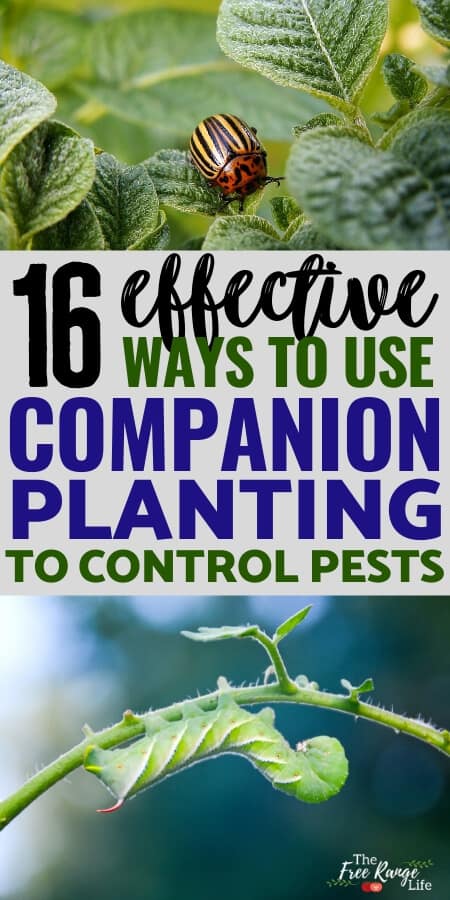Master Companion Planting for Pest Control

Master Companion Planting for Pest Control
Companion planting for pest control is an organic method that's been around for ages. It's like setting up a strategic chessboard in your garden, where each plant plays a role in warding off pests. Let's dive in and explore how you can master this technique.
What is Companion Planting?
Companion planting is like setting up a buddy system in your garden. It involves planting different crops together for mutual benefit, including pest management. Some plants repel pests, while others attract beneficial insects that prey on those pests.
The Art of Intercropping
Intercropping is a form of companion planting where you mix different types of plants together. It's not just about aesthetics; it's about creating a diverse garden ecosystem that's more resilient to pests. Think of it like a bustling city where different cultures live together, each bringing something unique to the table.
Plants That Repel Pests
Some plants are natural pest repellents. Take the French marigold, for example. It contains a substance called thiopene, which helps repel nematodes (microscopic worms). Other plants like mint, rosemary, and catnip are known to repel a variety of pests, from aphids to rodents.
Attracting Beneficial Insects
Not all insects are pests. Some are actually beneficial, preying on the bugs that wreak havoc in your garden. Plants like dill, yarrow, and wild parsnip attract these good guys. Ladybugs, for instance, love dill and will happily munch on aphids in your garden.
Companion Planting for Specific Pests
Different pests require different strategies. For example, if you're dealing with aphids, planting chives or garlic nearby can help repel them. If cabbage worms are your problem, consider planting thyme or hyssop to attract predatory wasps.
Planning Your Garden Layout
Planning is key in companion planting. You wouldn't want to plant two species together that don't get along. The Farmer's Almanac companion planting guide is a great resource to help you plan your garden layout.
Common Companion Planting Combinations
Here are a few tried-and-true combinations:
- Tomatoes and Basil: Basil repels flies and mosquitoes, and it's said to improve the flavor of tomatoes.
- Carrots and Onions: Onions repel carrot rust flies, while carrots repel onion maggots.
- Cabbage and Dill: Dill attracts beneficial wasps that prey on cabbage worms.
The Science Behind Companion Planting
Companion planting isn't just folklore; there's science behind it. Plants communicate and interact with each other through a network of chemicals and signals. This is often referred to as alleopathy.
Companion Planting vs. Monocropping
Monocropping, or planting a single crop in a large area, is common in modern agriculture. But it creates a buffet for pests. Companion planting, with its diversity, confuses pests and makes it harder for them to spread.
Companion Planting and Organic Methods
Companion planting fits perfectly with organic methods. It reduces the need for chemical pesticides, promoting a healthier garden ecosystem. Plus, it's cost-effective and environmentally friendly.
The Role of Crop Rotation
Crop rotation is another key aspect of pest management. By moving your plants around each year, you disrupt the life cycles of pests, making it harder for them to establish a foothold in your garden.
Observing and Adapting
Every garden is unique, and what works for one might not work for another. The key to successful companion planting is observation. Pay attention to what's happening in your garden and adapt your strategies as needed.
Conclusion
Companion planting for pest control is like setting up a miniature ecosystem in your garden. It's about creating balance, encouraging biodiversity, and working with nature rather than against it. So, why not give it a try? Your garden might just thank you.
FAQs
Q: Can companion planting eliminate the need for pesticides? A: While companion planting can significantly reduce pest problems, it may not eliminate the need for pesticides entirely. However, it can help minimize their use.
Q: What if I don't have space for companion plants? A: Even small gardens can benefit from companion planting. Try interplanting or using pots to maximize space.
Q: How do I know which plants to combine? A: Research is key. The Farmer's Almanac companion planting guide is a great place to start.
Q: What if companion planting doesn't work for me? A: Every garden is different. If one combination doesn't work, try another. Observation and adaptation are crucial.
Q: Can companion planting help with diseases? A: Yes, some plants can help deter diseases. For example, chives and garlic are known to help prevent certain fungal diseases.
0 Response to " Master Companion Planting for Pest Control"
Post a Comment